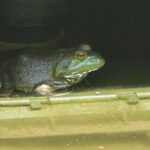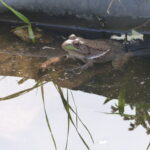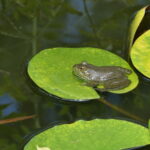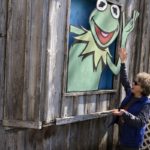Outside our dining room is a tiny pond crafted by our home’s previous owner. It’s smaller than a compact car and is the regular home of water lilies, dragonflies, and a few goldfish we stock to eat mosquito larvae. One morning we were astonished to spot a large frog partly submerged on the pond’s edge. Where did it come from and how did it get here?
We live on an ancient sand dune. Rain quickly percolates downward, so the rubber membrane at the pond’s bottom holds water that would otherwise quickly disappear. No other bodies of water are close by. Could our frog have hopped a half-mile uphill from Indian Creek? Did it come from a nearby neighbor’s pond? And, how would it have got there since we all live on a hill?
We know birds, insects and mammals find and settle in new habitats. They’re mobile and fly or walk until they spot a new home place. Frogs and turtles can walk – or hop -but they’re slow and vulnerable to predators when venturing on land.
Ask the Expert!
We didn’t know how our frog found our pond, so we asked biologist Dr. Neil Bernstein.
He responded by saying that some frogs disperse from wetland to wetland randomly, and there’s speculation that eggs can attach to waterfowl legs. His short answer was, “I don’t know”.
That’s a wise response. Science has revealed many of nature’s mysteries, but more remain unknown. Did our frog somehow sense that a tiny pond way up yonder would be a good place to risk hopping to? We don’t know but we’re certain this wandering amphibian is welcome to enjoy life at Winding Pathways.
- Waiting for lunch in the shade.
- How the frog came here is a mystery.
- Resting in the sun.
- Leland, Mississippi is home of Kermit the Frog.






The frog was drawn to all the good energy at Winding Pathways!